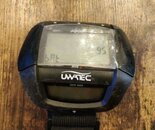SmashMonkey
Contributor
When you say there were differences in the algorithms, did you mean between DSAT and PZ+, or between 300Gs and Veo 4s both running DSAT?
The former is expected with PZ+ being more conservative than DSAT. The differences for air dives can be seen on pp 56-57 of your Veo 4 owner's manual. The DSAT NDLs have not changed over time.
I meant that there were differences between DSAT (Aeris 300G hose console) vs. PZ+ (Oceanic Veo 4.0 right wrist) on the same dive. As you pointed out, it was expected.
FWIW on a couple of dives we compared them it to my instructor's Suunto (IIRC D series watch) running RGBM. For the few dives we compared in the 40'-100' NDL rec diving range (1 or 2 tank w/ 1 hr SI) there were obviously differences in the 3 algos calculated NDLs. For the small sample size of vacation diving we were doing, the differences were not huge, maybe a few minutes.




